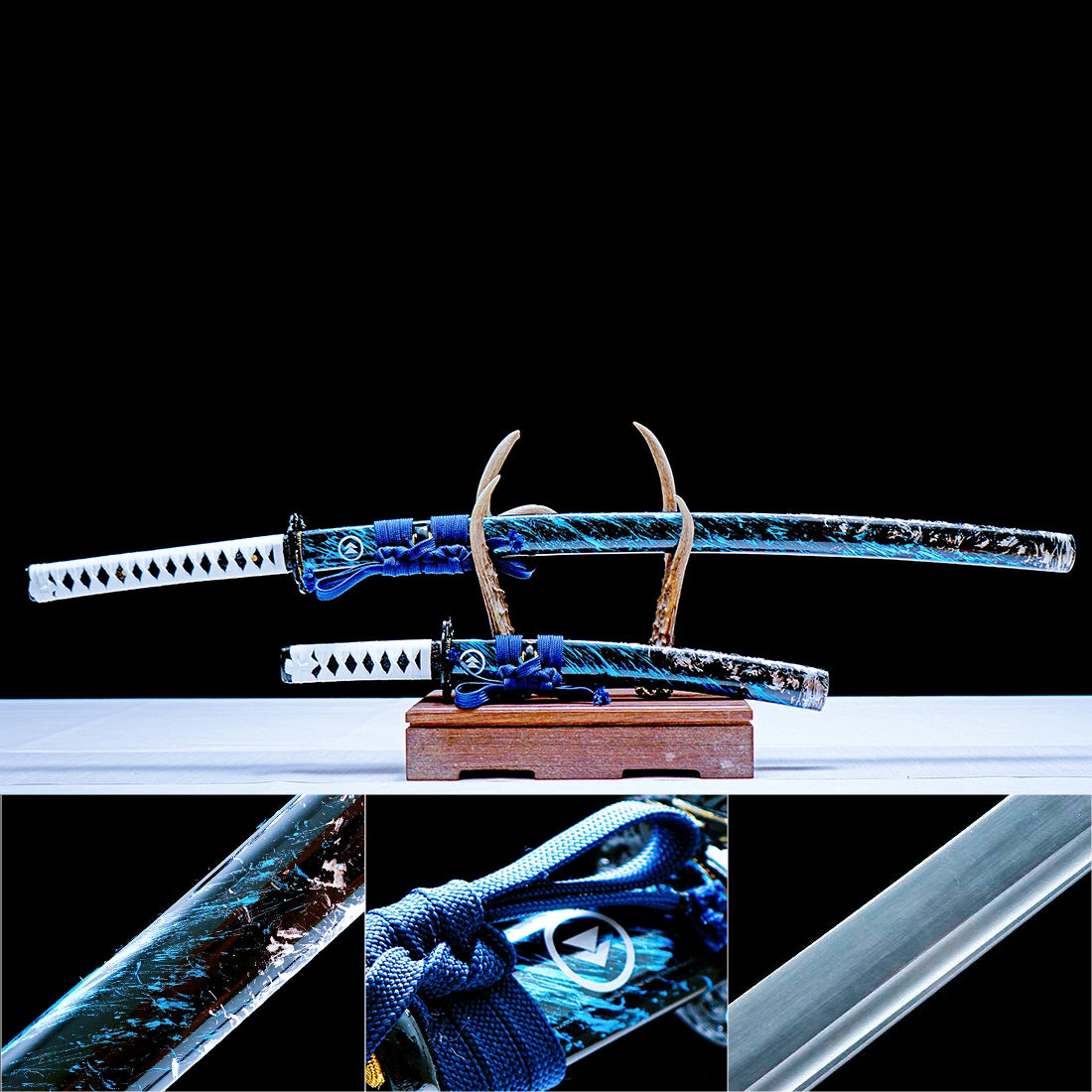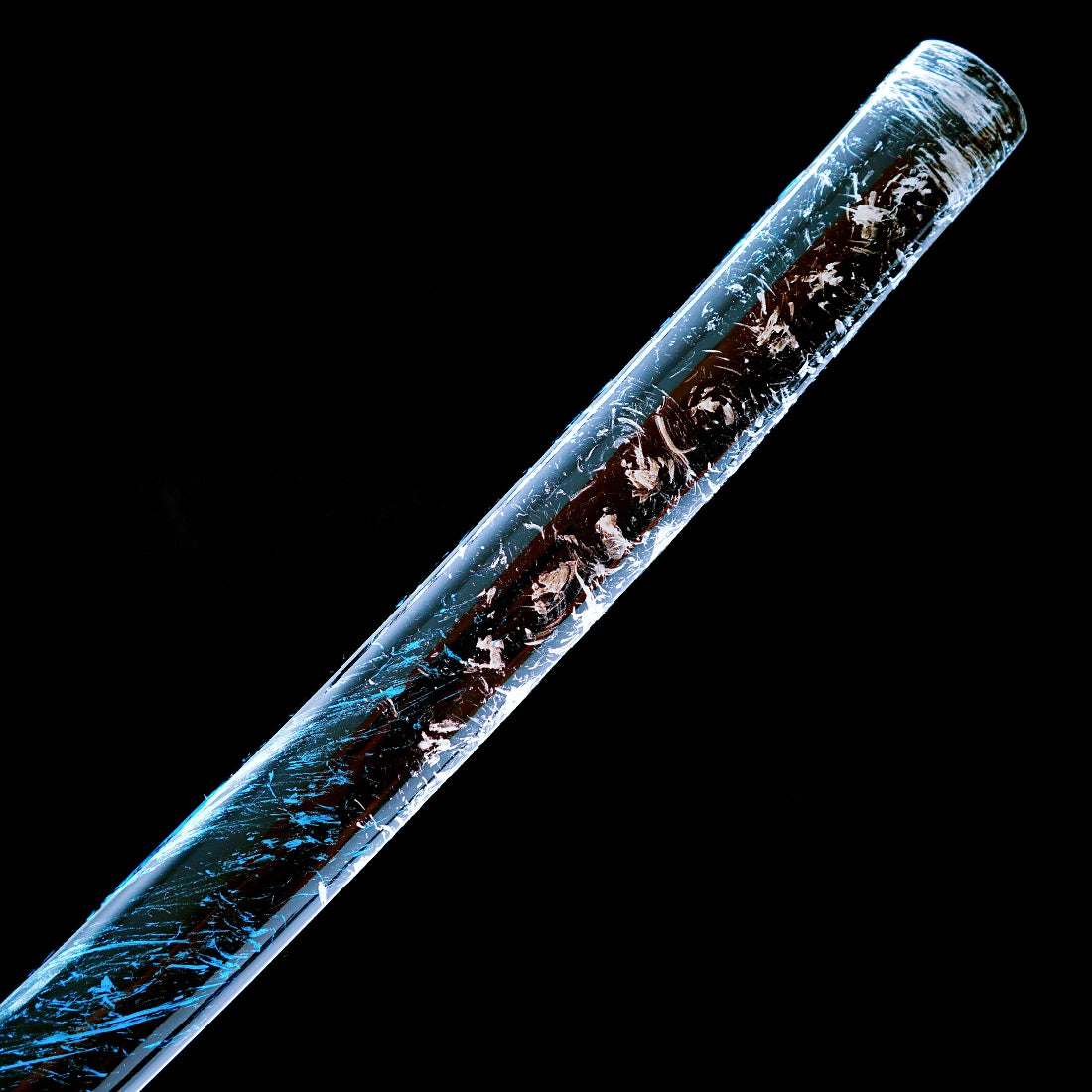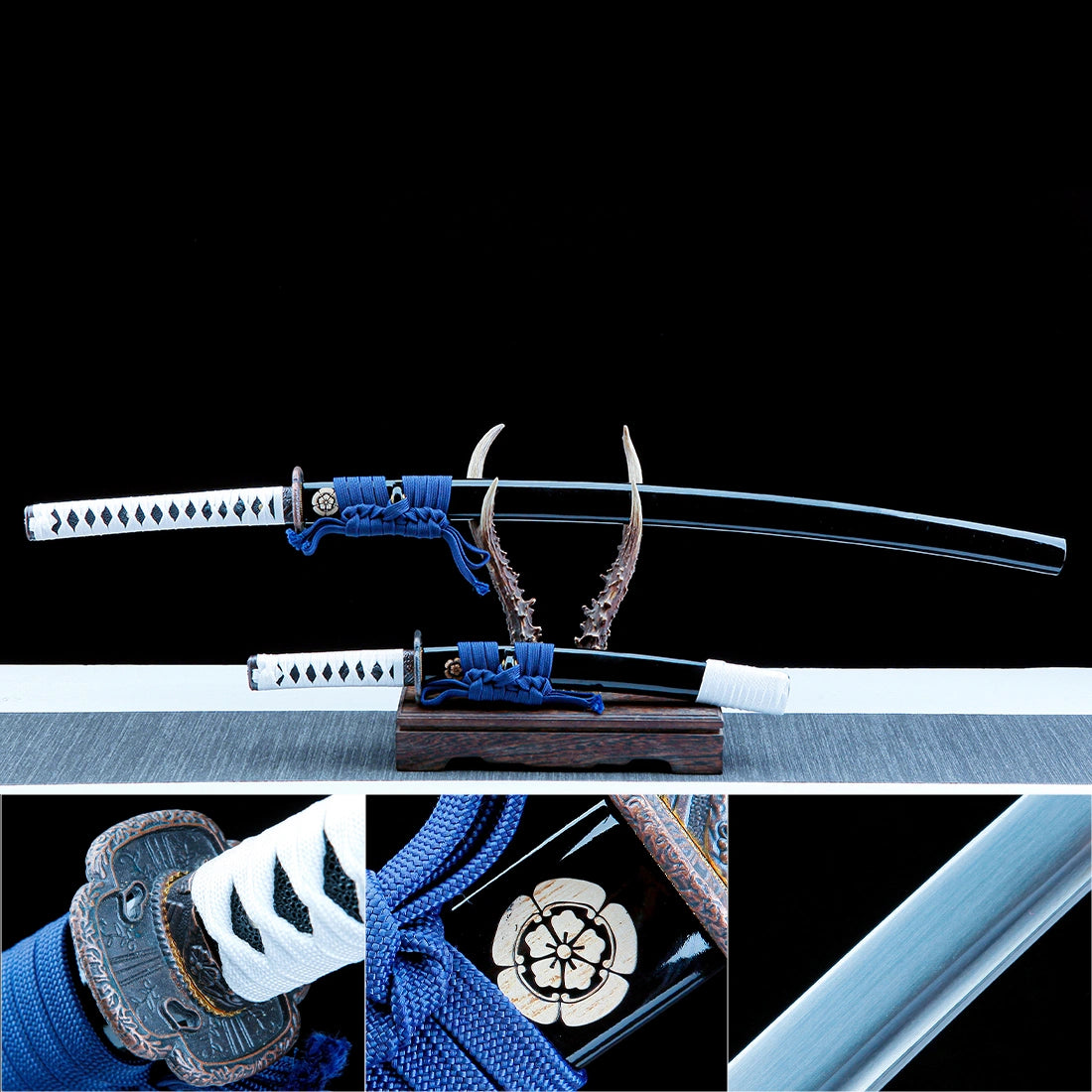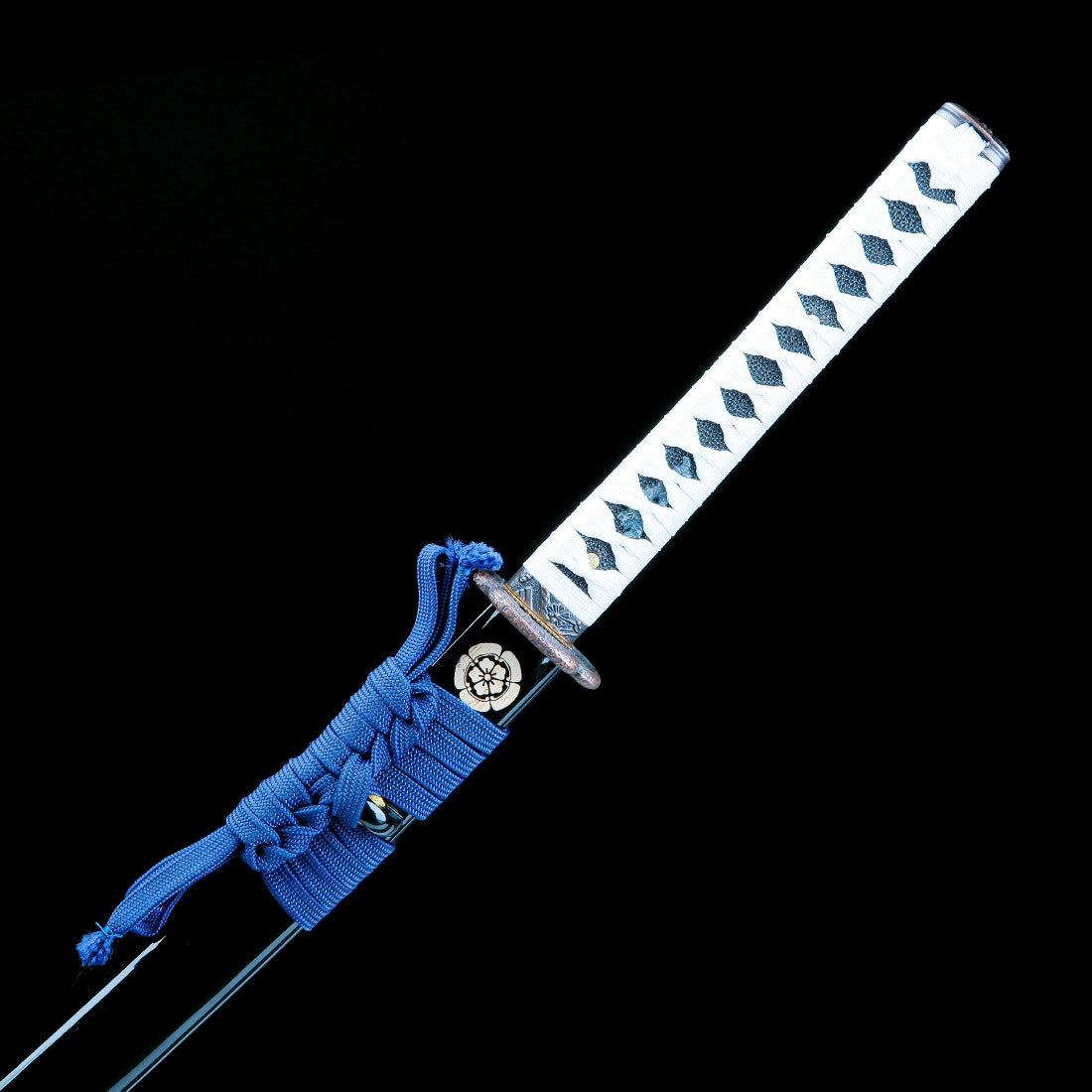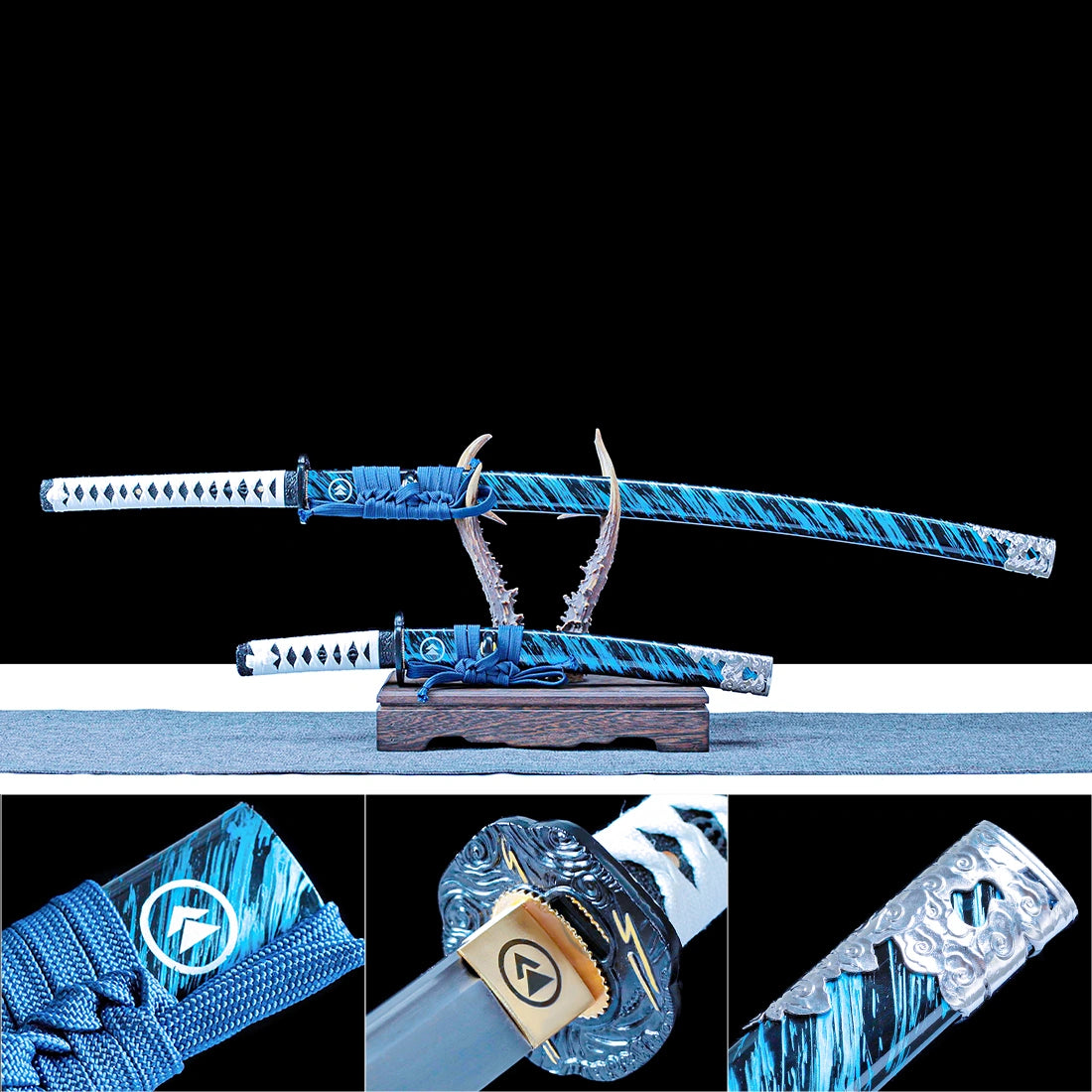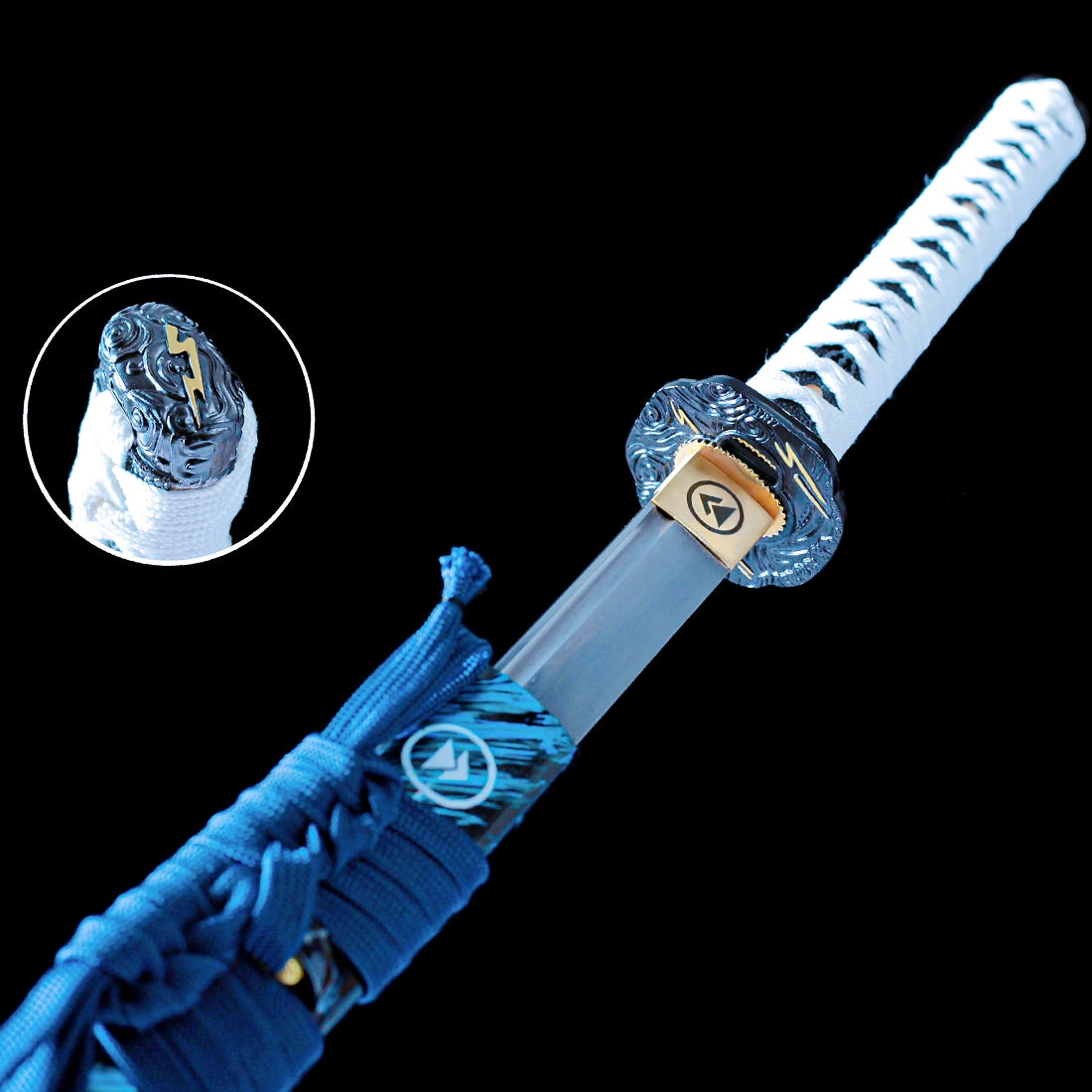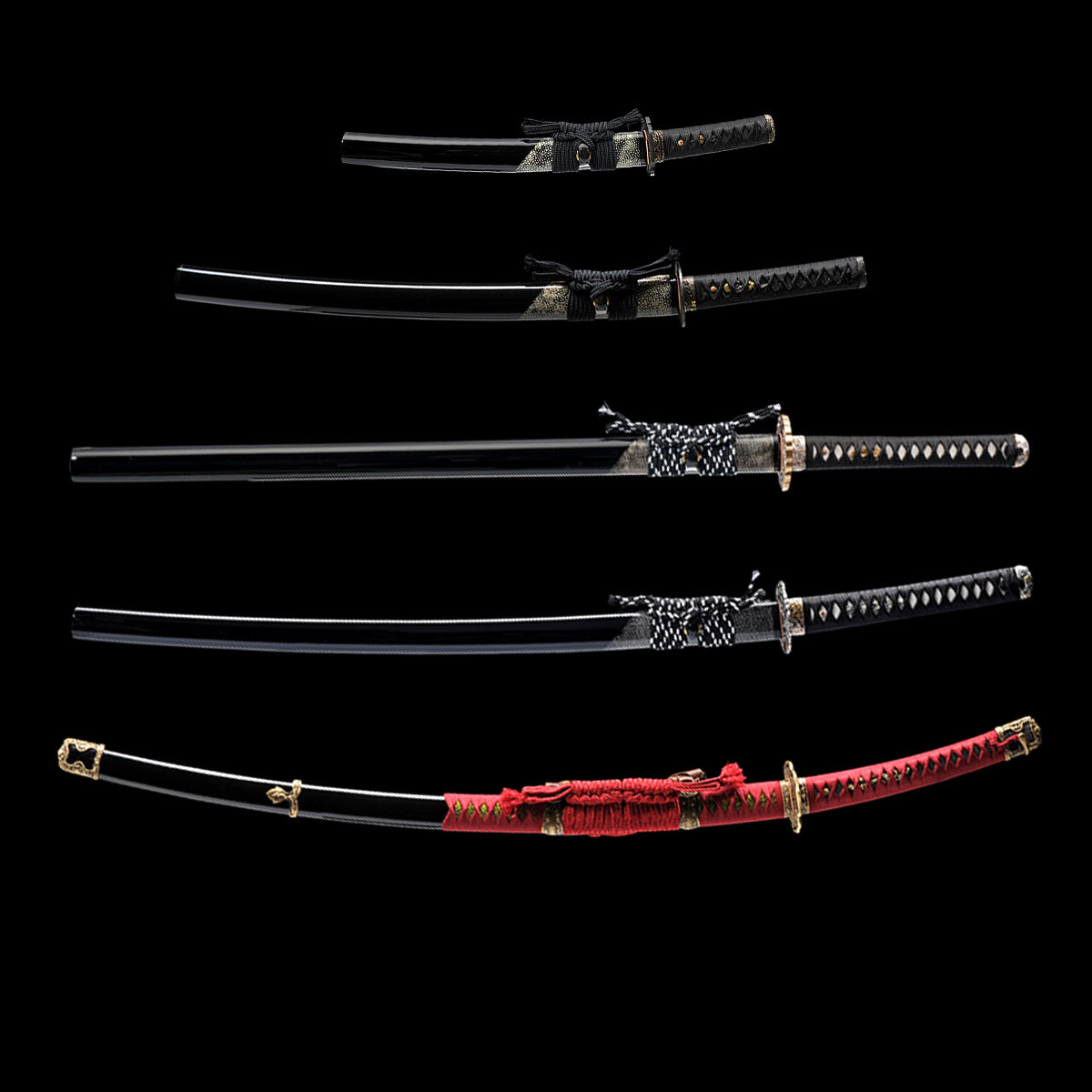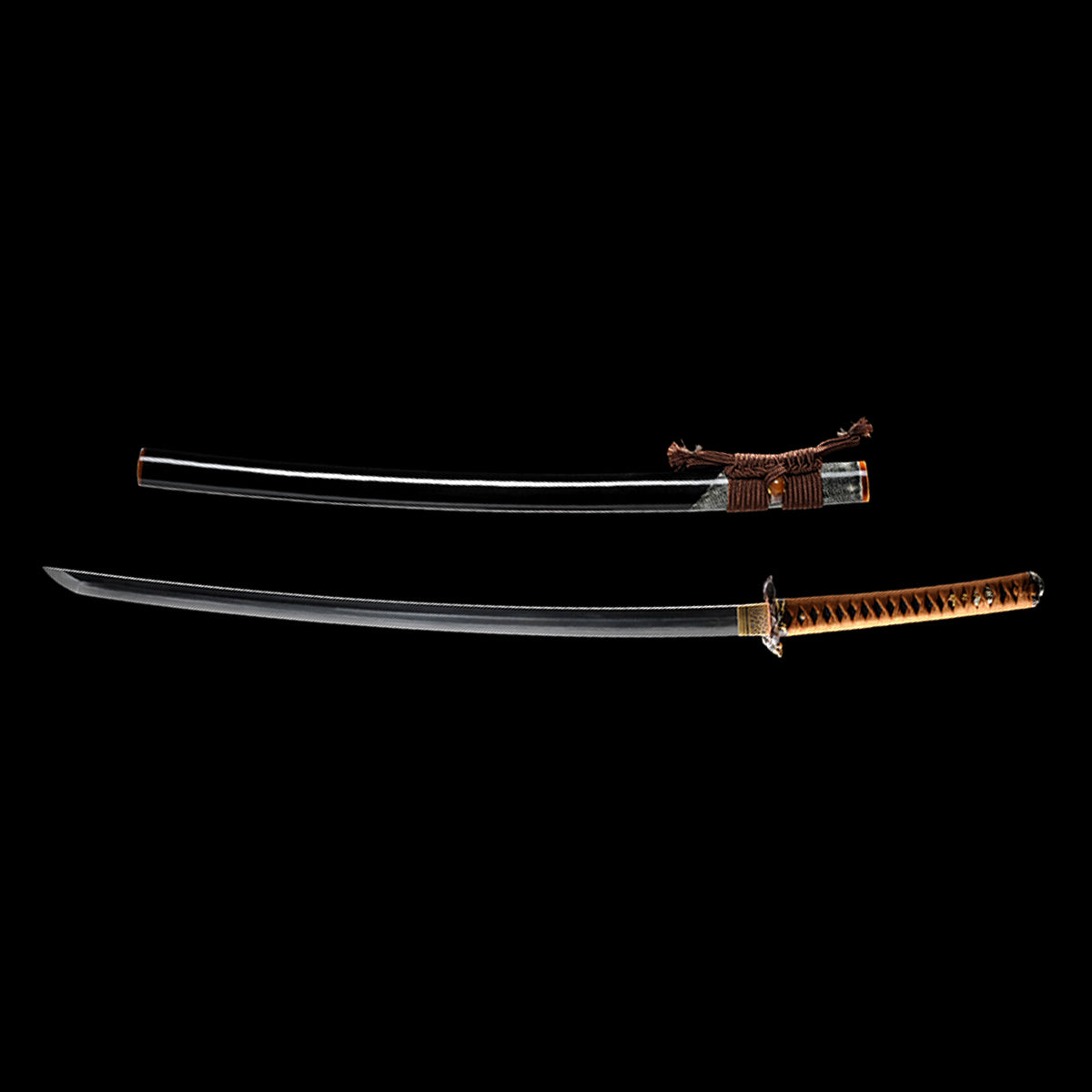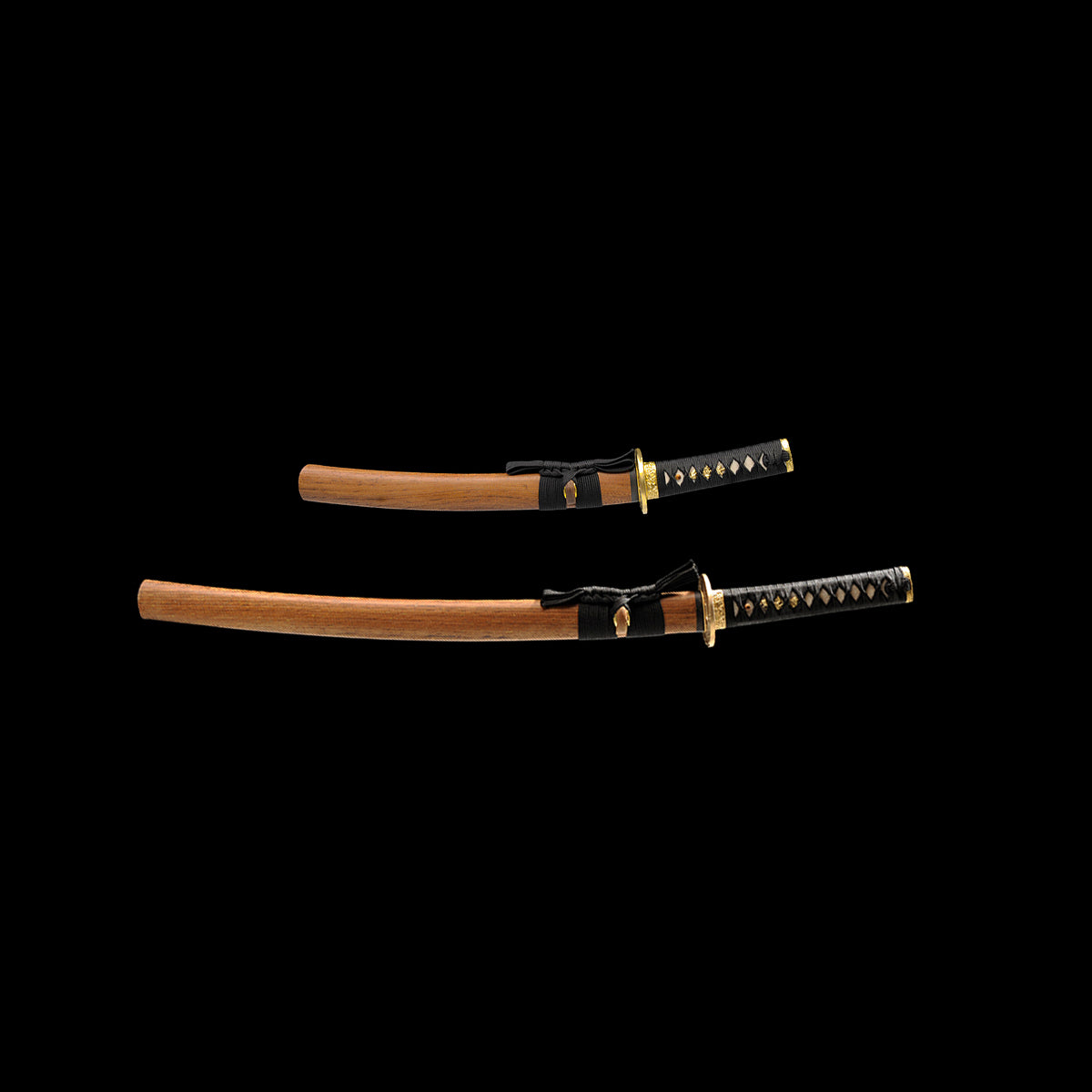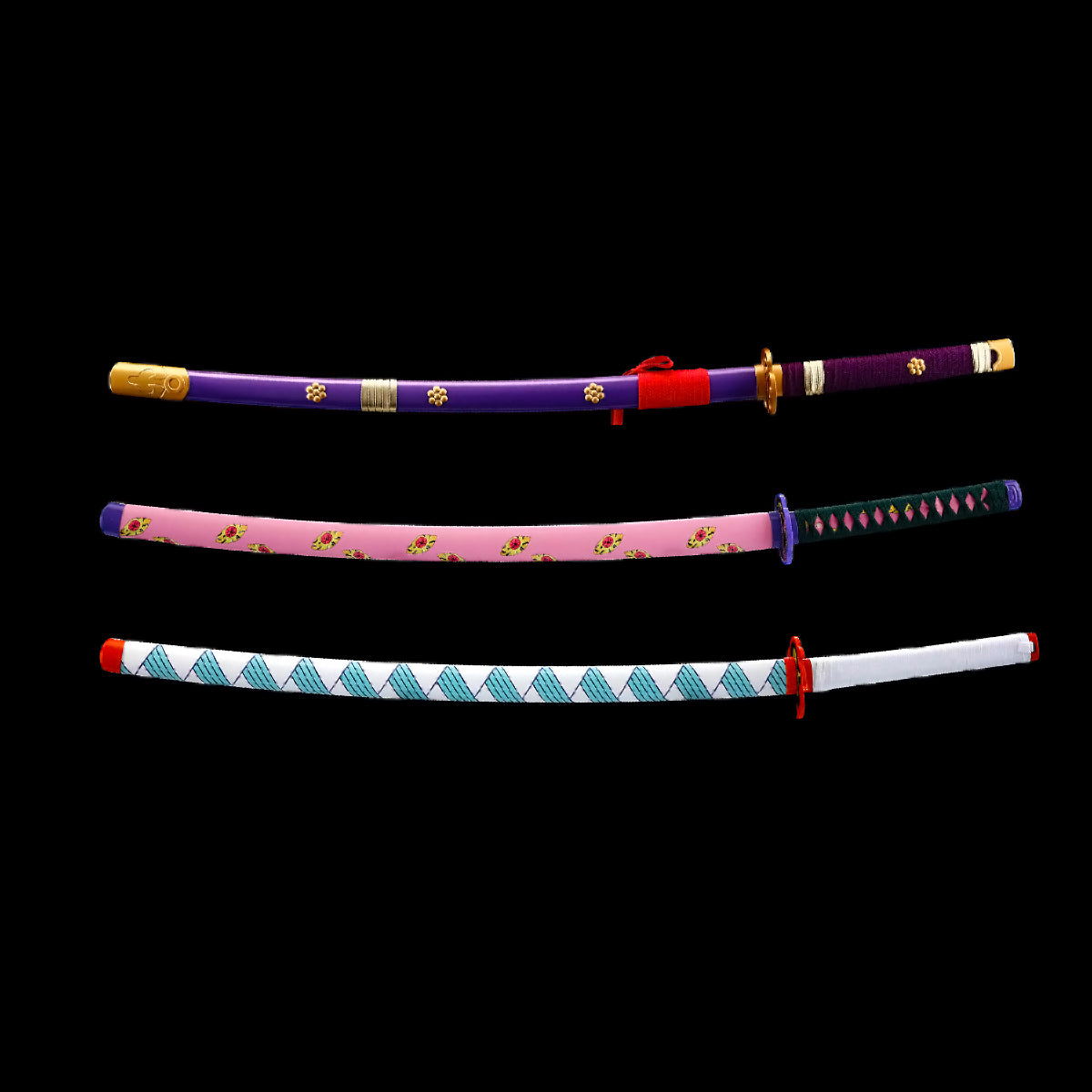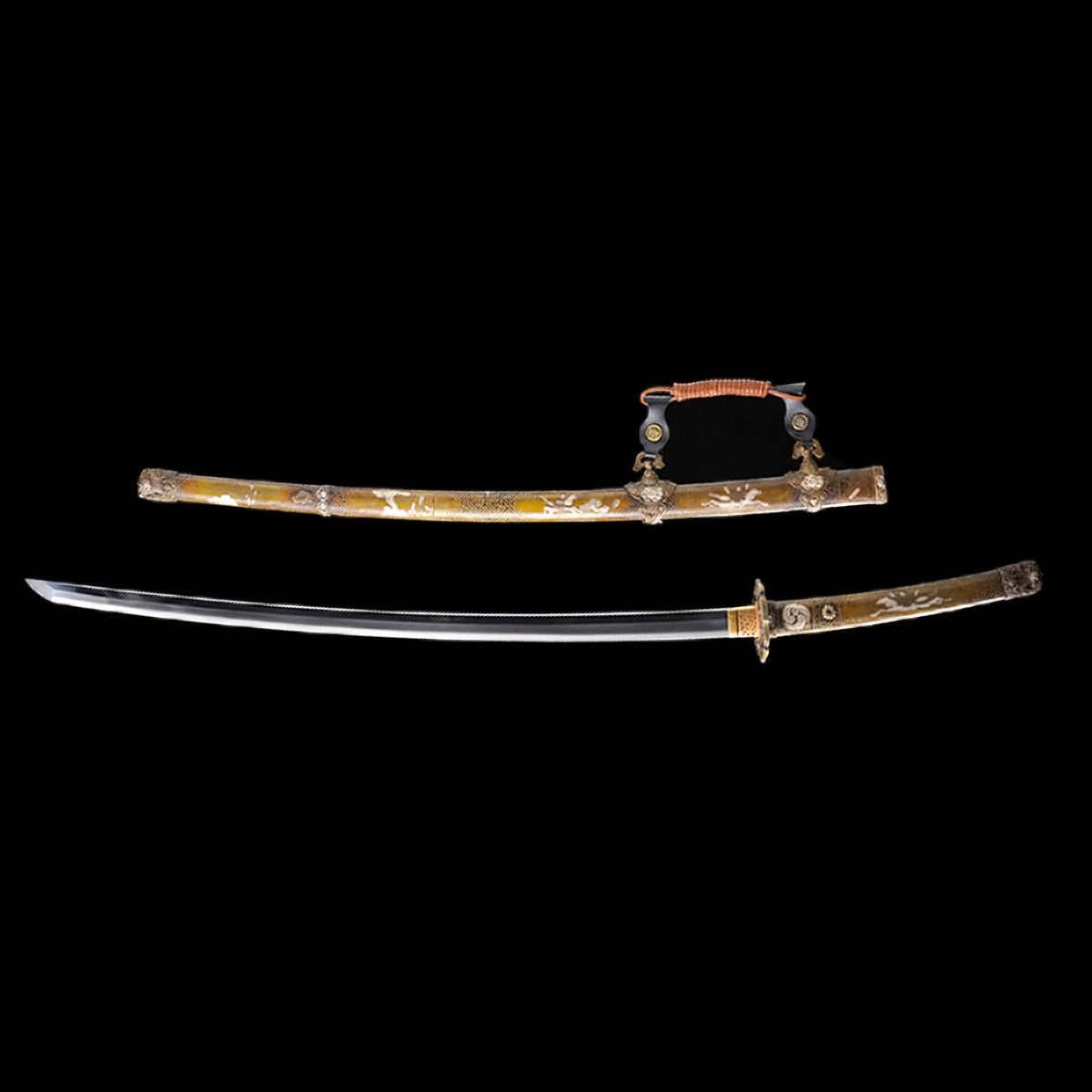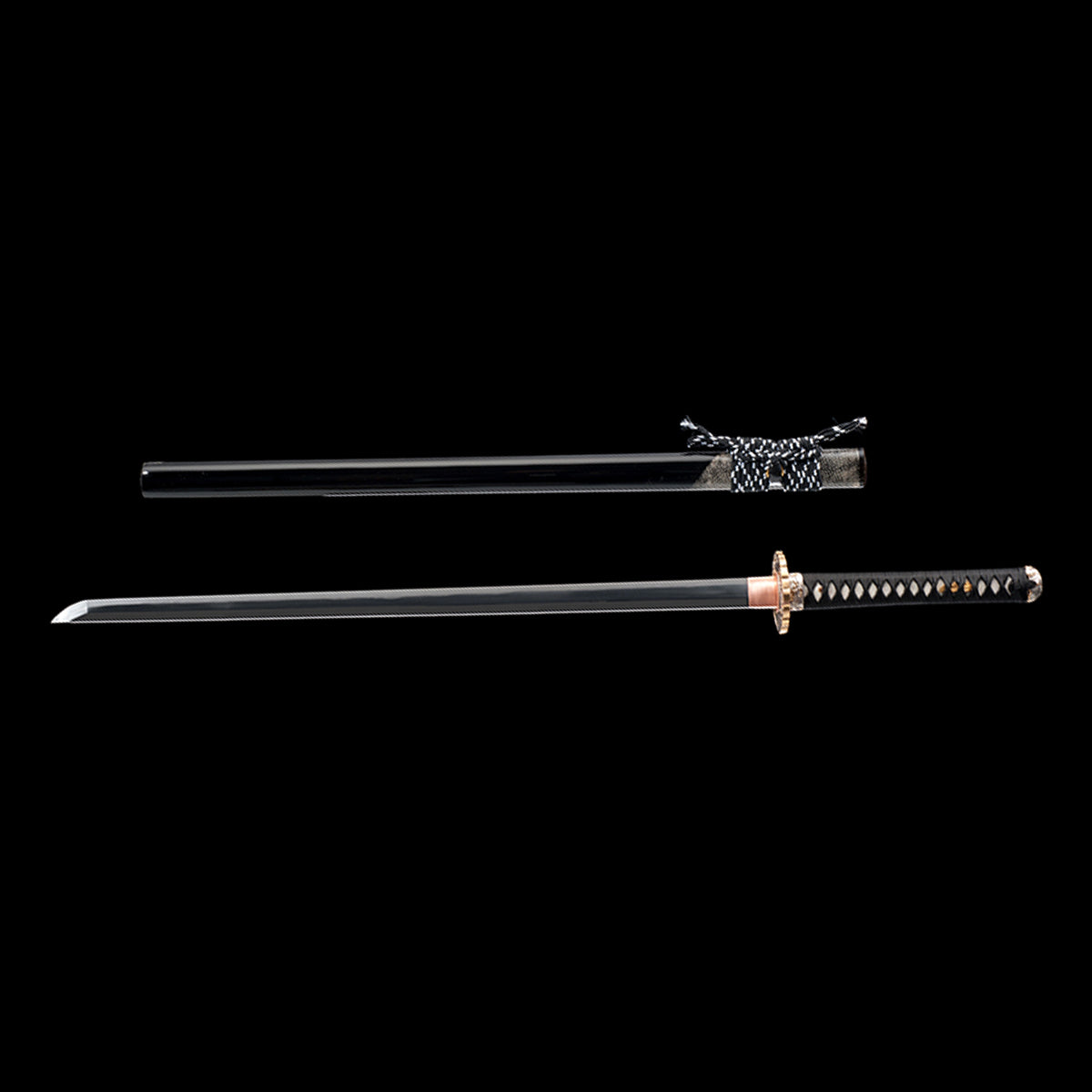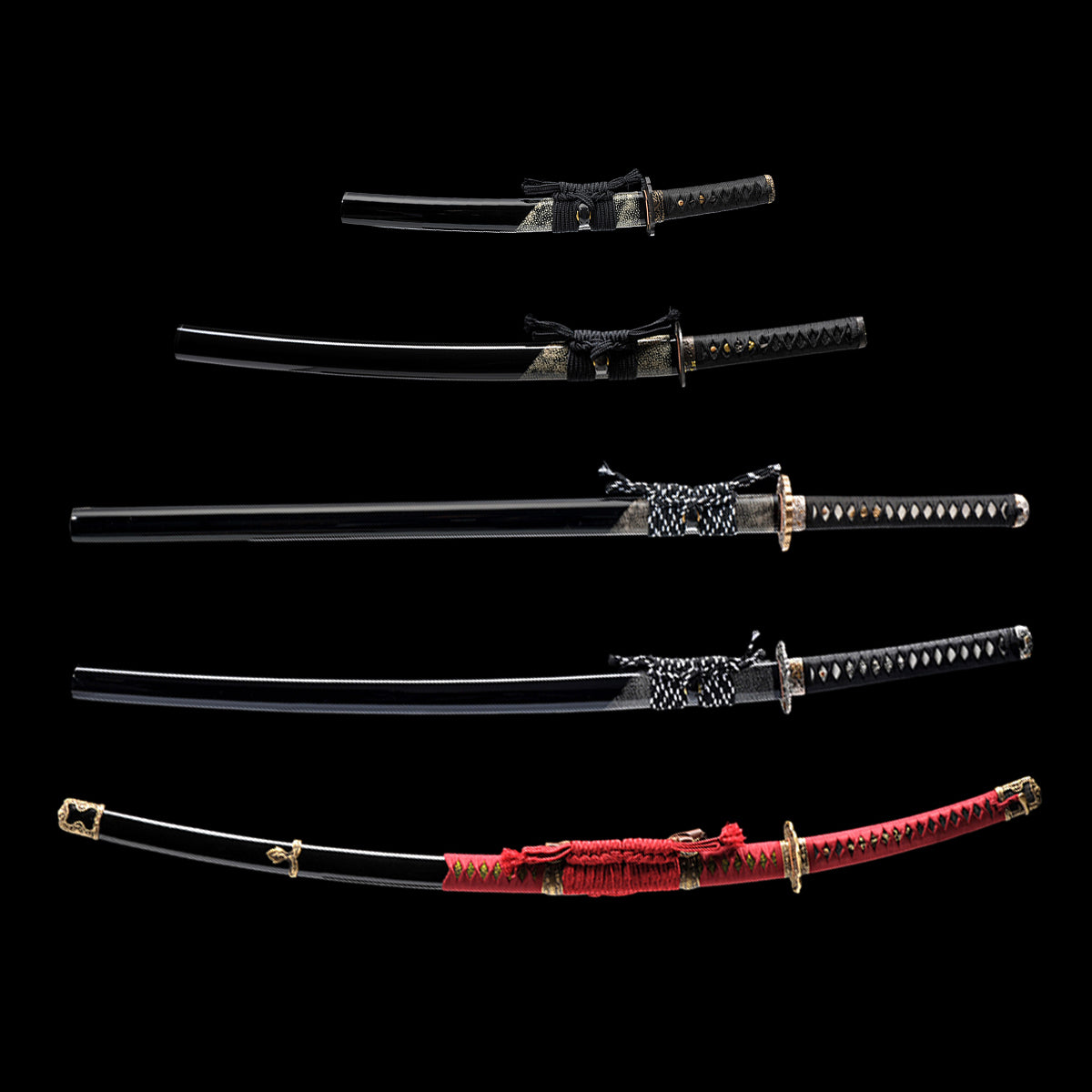FAQs
Is Sakai Katana the only sword?
Is Sakai Katana the only sword?
No, the Sakai Katana is not the only sword. However, this answer requires significant nuance. Jin Sakai wields a single, primary physical katana throughout the entire game—the Sakai Katana. Yet, the game features a sophisticated system of cosmetic variants, gameplay modifiers, and narrative-contextual weapons that create the illusion and functionality of wielding different swords. Furthermore, from a technical and design perspective, the "sword" is a composite entity defined by its stats, charms, and your skill tree progression.
This analysis will break down the concept of the "sword" in Ghost of Tsushima into its core components.
1. The Primary Physical Weapon: The Sakai Katana
This is the literal, physical object Jin carries on his hip. It is a unique, named heirloom weapon.
- Narrative Identity: It is referred to as the "Sakai Steel" in loadout screens and cinematics. Its story is tied to Jin's father, Lord Kazumasa Sakai, and it serves as a symbol of the Sakai clan's honor and legacy. You never loot, purchase, or permanently replace this weapon.
- Permanence: It is the only constant piece of equipment in the game. You upgrade its sharpness, health damage, and stagger damage at trappers using Iron, Steel, and Gold. These upgrades are applied to this single weapon.
- Visual Customization: While it is always the same physical blade, its appearance can be dramatically altered through Sword Kits. These are cosmetic unlocks found throughout Tsushima that change the guard (tsuba), hilt wrapping (tsuka-ito), and scabbard (saya). Examples include the "Hero of Tsushima" kit or the "Yharnam" kit (a Bloodborne crossover). This allows for visual personalization while the underlying weapon remains the Sakai Katana.
Verdict: In the literal, physical sense, yes, Jin wields only one katana—the Sakai Katana.
2. Functional "Swords": Gameplay Builds and Charms
This is the most critical dimension for understanding the game's mechanics. While the physical blade doesn't change, its performance characteristics can be radically altered through charms and armor, effectively creating entirely different "weapons" in terms of gameplay.
- The Charm System: Charms are equippable items that provide statistical bonuses. By slotting specific charms, you redefine what your katana does.Example - The Parry Sword: Equip the Charm of Mizu-no-Kami (larger parry/dodge window) with the Charm of Perfect Parry (Perfect Parry can cause terror). Your katana is now optimized for defensive counter-play.Example - The Stagger Sword: Equip the Charm of Inari's Might (massive increase to health and damage) with the Charm of Susanoo (melee kills grant chance for massive bonus damage). Your katana is now a brute-force tool for breaking enemy guards.Example - The Fire Sword: Use the Way of the Flame technique enhanced by the Charm of Incineration (extends burn duration). Your katana becomes a conduit for elemental damage.
- Armor Synergy: Armor sets further define your sword's role.Gosaku's Armor turns your katana into a stagger-breaking weapon that heals you.Sarugami Armor (Iki Island) turns your katana into a devastating counter-attack weapon that triggers unique slow-motion animations on perfect dodges.Kensei Armor enhances Ghost Weapons but also makes your sword attacks after a Ghost Weapon use deal significantly increased damage, effectively making it a "finisher's sword."
Verdict: From a gameplay perspective, no, the Sakai Katana is not the only "sword." It is a base platform upon which dozens of functionally distinct weapons are built through customization.
3. Contextual and Secondary Blades
Jin possesses and utilizes other blades, which are mechanically and categorically distinct from his primary katana.
- The Tanto (Tantō): This is Jin's Wakizashi (short sword). It is a separate weapon used exclusively for stealth assassinations and standoff victory strikes. While it shares the same cosmetic customization as the katana (via Sword Kits), it has its own upgrade path focused solely on increasing the number of targets you can chain in a standoff and the damage of stealth attacks. It is a fundamentally different tool with a dedicated function.
- The Mongol Officer's Sword (Yuna's Gift): Early in the game, Yuna gives Jin a blunt Mongol sword to prove himself to the Straw Hat ronin. This is a temporary, narratively-contextual weapon with inferior stats. It is immediately and permanently replaced upon the retrieval of the Sakai Katana and serves to highlight the katana's superior quality.
- Enemy and NPC Swords: From a gameplay perspective, Jin can disengage from combat and pick up a Heavy Weapon such as a Mongol Shield or a Warrior's Spear. These function as temporary, throwable weapons with unique movesets. Furthermore, during specific duels, Jin may be disarmed and forced to retrieve his katana, or he may pick up a nearby weapon in a scripted event (e.g., a bamboo stick during a flashback). These are not permanent additions to his arsenal.
Verdict: Jin possesses a dedicated secondary blade (the Tanto) and interacts with temporary contextual weapons, but his primary melee instrument remains the Sakai Katana.
4. Philosophical and Design Perspective
The decision by Sucker Punch to have Jin wield a single, iconic katana is a deliberate design choice that serves multiple purposes:
- Narrative Focus: It reinforces the game's themes of legacy, honor, and a samurai's connection to his blade. The katana is an extension of Jin's soul, and its evolution (and the chipping of its edge) mirrors his own transformation.
- Player Connection: Instead of frequently swapping to a better looted sword, the player invests in upgrading and customizing their sword. This creates a deeper sense of attachment and ownership.
- Streamlined Progression: It removes the "loot" aspect common in other open-world RPGs (e.g., The Witcher or Assassin's Creed: Valhalla), focusing progression on player skill (unlocking techniques) and meaningful upgrades rather than inventory management.
Final Comprehensive Verdict
No, the Jin Sakai's Katana is not the only sword, but it is Jin's only primary katana.
- Physically, it is the one constant blade he wields in combat, though its appearance can be customized.
- Functionally, through the deep integration of the charm and armor systems, it can be transformed into a wide array of statistically and behaviorally distinct weapons, from a parry-focused dueling blade to a fiery stagger-breaking monster.
- Contextually, Jin owns a separate Tanto for stealth and briefly interacts with other temporary melee weapons throughout the story.
Therefore, the game masterfully creates the feeling of wielding and customizing many different swords while maintaining the narrative and emotional weight of a single, iconic family heirloom.
What is the best sword in Ghost of Tsushima?
What is the best sword in Ghost of Tsushima?
Defining "Best": A Two-Pronged Analysis
The question of the "best sword" is complex because Ghost of Tsushima operates on two parallel levels: the narrative and the ludological (game mechanics). Therefore, the answer must be split into two distinct categories:
- The Best Narrative & Symbolic Sword: The Sakai Steel Katana and Tachi.
- The Best Gameplay Sword: The Perfect Parry / Perfect Dodge Charms Sword build.
1. The Narrative & Symbolic Best: The Jin Sakai's Katana and Tachi
From a story, historical, and symbolic perspective, there is no debate. The finest blade on Tsushima is the one wieldened by Jin Sakai and his father, Lord Kazumasa Sakai.
- Lineage and Craftsmanship: The Sakai katana is a family heirloom, forged by a master swordsmith, likely on the mainland Japan. It represents generations of samurai tradition, duty, and honor. The care and quality of such a blade would be far superior to mass-produced weapons used by common bandits or even the Mongol invaders. The Mongols, while effective warriors, were not renowned for the fine art of swordsmithing; their strength lay in numbers, tactics, and brutality. A well-forged Japanese katana, like the Sakai blade, would be sharper, more resilient, and better balanced than any weapon a Mongol soldier would typically carry.
- Symbolism: The sword is the literal and spiritual embodiment of the "Way of the Samurai." Throughout the game, Jin's relationship with his katana evolves. It begins as a symbol of his strict honor code and transforms into a tool for liberation, regardless of the cost to that honor. The chip on the blade's edge, visible in close-ups, is a powerful narrative device symbolizing the damage and wear inflicted upon Jin's soul and his ideals.
- The Sakai Tachi (Long Sword): It's crucial to note that Jin wields both a katana (the standard long sword) and a tanto (a short dagger). The katana is referred to in-game as the "Sakai Steel" for your primary loadout. Its appearance is fixed to the story's progression but can be altered later with vanity items. This is the "one true sword" of the narrative.
Verdict: For its unparalleled craftsmanship, deep narrative significance, and symbolic weight, the Sakai Katana is the undisputed canonical best sword.
2. The Gameplay & Mechanical Best: The "Build" Sword
From a pure gameplay optimization perspective, the "sword" is not a single lootable item but a combination of your base katana, its charms, and the armor you wear. The goal is to create a synergistic build that maximizes the sword's effectiveness. The most powerful and technically proficient build focuses on maximizing windows of opportunity through perfect defenses.
The Core Principle: This build prioritizes the Way of the Flame technique and devastating counter-attacks, enabled by maximizing the ease of achieving Perfect Parries and Perfect Dodges.
The Components of the Ultimate Gameplay Sword:
A. The Katana Itself:
- The base damage of your katana increases naturally as you progress through the game and upgrade it at trappers with supplies and iron. A fully upgraded katana is, of course, mandatory.
- Key Technique Unlocks (Skill Tree):Perfect Parry and Perfect Dodge: The foundation of this entire build. Must be unlocked early.Way of the Flame (Mythic Technique): A essential technique that sets your sword ablaze, interrupting enemy attacks, breaking through blocks, and dealing significant damage over time.Resolved Momentum (Ghost Tab): Perfect parries and dodges restore a large amount of Resolve.
B. The Essential Charms:
Charms are the true "modifiers" that define your sword's capabilities. The best setup focuses on defense-to-offense conversion.
- Charm of Mizu-no-Kami (Essential): Dramatically increases the parry and dodge windows. This is the single most important charm for this build, making Perfect Parries and Dodges significantly easier to execute consistently.
- Charm of Amaterasu (Sustain): Killing enemies restores a moderate amount of health. This allows for aggressive, sustained combat without breaking flow to use Resolve for healing.
- Charm of Okuninushi (Alternative Sustain): Health regenerates to 50% outside of combat. Frees up Resolve purely for offensive techniques.
- Two Charm Slots dedicated to Offense:Charm of Inari's Might: Massively increases health and damage. Found at the Arrow Peak Shrine, this is arguably the strongest raw damage charm in the game.Charm of Susanoo: Killing an enemy with a melee attack grants a chance to deal massive bonus damage on your next attack. Excellent for chaining kills.Charm of Nigihayashi: Massively increases melee damage. A pure, reliable damage boost.
C. The Optimal Armor:
Armor sets provide passive bonuses that complete the build.
- Primary Choice: Sarugami Armor (Iki Island DLC)Level 2 Bonus: A Perfect Parry creates an opportunity for a counter-attack that can hit multiple enemies.Level 3 Bonus: A Perfect Dodge triggers a slow-motion effect and allows for a series of devastating slashes.Why it's the best: This armor is specifically designed to reward perfect defensive maneuvers with the most powerful and stylish counter-attacks in the game. It synergizes perfectly with the Charm of Mizu-no-Kami and the Resolve Momentum skill.
- Secondary Choice: Gosaku's ArmorBonus: Majorly increases stagger damage to shields and brutes. Killing a staggered enemy restores health.Why it's great: This is the best offensive "dueling" armor. It allows you to break through the defenses of the toughest enemies (Spearmen, Brutes, Shieldmen) rapidly and heal from doing so. It turns your sword into a stagger-breaking machine.
How the "Ultimate Sword" Build Operates:
- Initiation: Use Way of the Flame to break a block or interrupt a powerful enemy.
- Defense: With the extended windows from Charm of Mizu-no-Kami, you effortlessly achieve Perfect Parries or Perfect Dodges.
- Counter: The Sarugami Armor activates:After a Perfect Parry, you unleash a powerful multi-hit counter-attack.After a Perfect Dodge, time slows, allowing you to land 3-4 free, high-damage hits.
- Sustain: Kills from these counters heal you via Charm of Amaterasu and generate Resolve from Resolved Momentum.
- Repetition: Use the generated Resolve to fuel another Way of the Flame or to heal if necessary, continuing the cycle of destruction.
Final Professional Verdict:
- For Pure, Canonical Superiority: The Sakai Family Katana is the best sword. It is an icon of the game's story and the soul of the protagonist.
- For Unleashing the Maximum Possible Mechanical Effectiveness in Combat: The best "sword" is not a single item. It is the fully upgraded katana wielded by Jin Sakai while utilizing a synergistic build centered around the Sarugami Armor, the Charm of Mizu-no-Kami, the Charm of Inari's Might, and the Way of the Flame technique. This setup transforms Jin's blade into an extension of the player's reflexes, creating a gameplay feedback loop of perfect defense and devastating offense that is unmatched by any other combination in the game.
Are there any special swords in Ghost of Tsushima?
Are there any special swords in Ghost of Tsushima?
Yes, Ghost of Tsushima features numerous "special" swords, but this requires precise definition. Unlike traditional RPGs where you loot progressively stronger swords, Jin Sakai wields his singular, iconic Jin Sakai's Katana throughout the entire journey. Its "special" qualities are not derived from replacement, but from three core systems:
- Cosmetic Variants (Sword Kits): Visual changes that make the sword look unique.
- Functional Builds (Charms & Armor): Mechanical changes that make the sword perform in unique, specialized ways.
- Narrative & Contextual Blades: Unique weapons encountered in specific story moments or duels.
This analysis will deconstruct each category to provide a comprehensive answer.
1. Cosmatically Special Swords: Sword Kits
Sword Kits are the most direct answer to the question. They are cosmetic collectibles that profoundly alter the appearance of Jin's katana and tanto, changing the guard (tsuba), hilt wrap (tsuka-ito), and scabbard (saya). They are often tied to legends, locations, or cultural references.
Notable and Lore-Significant Examples:
- The Hero of Tsushima: The default kit, representing the clean, honorable samurai aesthetic.
- Yharnam's Memory: A crossover item from Bloodborne. Features a dark, intricate European-style handguard and a scabbard wrapped in bandages. It is profoundly visually distinct from any Japanese-style kit.
- The Warrior's Faith: Found at the Temple of the Warrior's Faith. Its pure white scabbard and simple, elegant design make it one of the most striking and "special" kits in the game.
- Hidden Heart: Acquired by completing the "Legend of the Black Hand Riku" mythic tale. Its design is tied to a specific in-game story of a legendary thief.
- Fuujin's Secret & Raijin's Fury: These kits, found in the Iki Island expansion, are directly tied to the mythology of the Shinto gods of wind and thunder (Fuujin and Raijin), making them cosmically significant.
- Bishamon's Fortune: A kit that requires solving an environmental puzzle on Iki Island. Its name references Bishamonten, one of the Seven Lucky Gods of wealth and warriors.
Verdict: These are "special swords" in a visual and collectible sense. They carry unique histories and aesthetics but offer no gameplay advantages.
2. Functionally Special Swords: The Charm and Armor Build System
This is the most sophisticated and mechanically rich aspect of the game's combat. While the base katana remains the same, equipping specific Charm and Armor combinations fundamentally alters its statistical properties and combat role, effectively creating "specialized" weapons.
Key Examples of Functional Specialization:
- The Perfect Parry Sword:Core Components: Charm of Mizu-no-Kami (increases parry/dodge window) + Sarugami Armor (Iki Island).Specialization: This build transforms the katana into the ultimate dueling instrument. Perfect Parries and Dodges become easier to execute and trigger devastating, multi-hit counter-attacks or slow-motion sequences. The sword becomes an extension of the player's reflexes.
- The Stagger-Breaking Sword:Core Components: Charm of Inari's Might (massively increases health and damage) + Gosaku's Armor.Specialization: This build turns the katana into a brute-force tool. It excels at shattering the guard of shielded enemies and brutes. The Gosaku Armor bonus also provides health on killing staggered enemies, making it a sustainable powerhouse build.
- The Way of the Flame Sword:Core Components: Way of the Flame Mythic Technique + Charm of Incineration (extends burn duration) + Charm of Fortune (chance to double effect).Specialization: The katana becomes a conduit for elemental fury. It can ignite enemies, causing damage over time, breaking blocks, and interrupting attacks. This is a "special" elemental enchantment in the purest sense.
- The Ghost Sword:Core Components: Kensei Armor + Charm of Demonic Ends (Ghost Weapons cause terror).Specialization: This build synergizes the katana with Ghost Weapons. Using a smoke bomb or kunai significantly boosts the damage of your next sword attacks, making the katana a lethal "finisher" in a hybrid combat style.
Verdict: Through this system, the player does not find special swords; they engineer them. The Sakai Katana serves as a platform for creating a vast array of functionally unique and highly specialized weapons.
3. Narratively & Contextually Special Swords
These are unique blades encountered in specific, scripted moments within the game's story and world.
- Lord Shimura's Katana: During the final duel, the player faces off against their uncle, Lord Shimura. His katana is visually distinct and is part of one of the most narratively weighty encounters in the game. While you cannot wield it, its significance is immense.
- Khotun Khan's Glaive: The primary antagonist wields a unique Mongolian glaive (a polearm). This weapon has a distinct moveset and is encountered in multiple boss fights. It represents the foreign, brutal threat opposing Jin's way of life.
- The Spirit of Yarikawa's Vengeance: During the "Ghost of Yarikawa" mission, Jin inspires a legendary, almost supernatural fear in the Mongols. While not a physical sword, the "blade" of the Ghost itself becomes a symbolic weapon of terror, more powerful than any steel.
- Temporary/Contextual Blades:Yuna's Gift (Mongol Sword): The blunt Mongol officer's sword given to Jin by Yuna is a unique narrative device. It is a temporary, inferior weapon that highlights the quality and significance of reclaiming his family katana.Bokken (Wooden Sword): In a flashback sequence on Iki Island, a young Jin uses a wooden training sword. This is a unique contextual weapon for that specific memory.Heavy Weapons: Jin can temporarily disarm enemies and use their "special" weapons, such as a Mongol Shield (a sword attached to a shield) or a Warrior's Spear. These have unique, slow, powerful movesets but break after a few uses or are thrown.
Conclusion: A Nuanced Definition of "Special"
Ghost of Tsushima intentionally subverts the standard loot-driven progression. Instead of finding a "Frost Sword" or "Dragon Slayer" in a chest, the game offers a more nuanced and personally crafted approach to weapon specialization.
- For Visual Collectors: The "special swords" are the Sword Kits, each with its own story and aesthetic.
- For Combat Optimizers: The "special swords" are the functional builds created through charms and armor, allowing for deep mechanical customization.
- For Story Enthusiasts: The "special swords" are the narrative blades wielded by key figures, representing ideological conflicts and pivotal moments.
Therefore, the answer is a definitive yes, there are special swords, but their nature is defined by the player's engagement with the game's customization systems and narrative, rather than by traditional loot tables. The true special weapon is the Sakai Katana itself, for its capacity to embody all these forms of specialization through the player's choices.
How to get black sword in Ghost of Tsushima?
How to get black sword in Ghost of Tsushima?
The term "Black Sword" refers specifically to a Sword Kit cosmetic variant for Jin Sakai's katana and tanto called Midnight Blade. It is not a separate, statistically superior weapon. This kit gives the sword's scabbard (saya), hilt (tsuka), and guard (tsuba) a deep black and dark metallic appearance. It is acquired by completing the mythic tale, "The Legend of Black Hand Riku."
1. Terminology Clarification: Sword Kit vs. Functional Weapon
It is crucial to understand what the "Black Sword" is and is not:
- It is NOT a new weapon: Jin Sakai wields only one primary katana throughout the entire game—the Sakai Steel katana, an heirloom weapon. Its core statistics (damage, stagger) are upgraded with resources at trappers.
- It IS a cosmetic item: A Sword Kit is a collectible that changes the visual appearance of your katana and tanto. It offers no gameplay advantages; its value is purely aesthetic and collectible.
- The "Black Sword" is the "Midnight Blade" Sword Kit: This is the specific name of the cosmetic set that gives the sword its iconic black-on-black aesthetic.
2. Prerequisites: Unlocking the Mythic Tale
Mythic Tales are multi-part, legendary side quests marked by golden birds and musicians on the map. To unlock "The Legend of Black Hand Riku," you must:
- Progress the Main Story: You must complete Act I and arrive in Toyotama, the second region of Tsushima. The tale becomes available early in Act II.
- Explore the World: A golden bird will likely appear to guide you to the musician who starts the tale. If not, you can find him manually.
- Locate the Musician: The musician for this tale is located in the Akashima village area of Toyotama. Look for a golden icon on your map.
3. Step-by-Step Guide: Completing "The Legend of Black Hand Riku"
This mythic tale is a multi-stage quest that involves investigation, traversal, and combat.
Step 1: Speak to the Musician
- Approach the musician in Akashima. He will tell the story of Black Hand Riku, a legendary thief who stole from the rich and was never caught. He will mark a general area on your map to begin your investigation.
Step 2: Investigate the First Area (Bandit Camp)
- Travel to the designated area, which will be a Mongol- or bandit-occupied farmstead.
- Use Guiding Wind to hone in on the exact investigation point, or use your Focused Hearing to locate yellow interactive objects.
- You must find and examine three specific clues:A lone, empty khopesh (a specific type of curved Mongol sword) stuck in the ground.A set of footprints leading away from the scene.A bloodstain on the ground near the footprints.
- After examining all three clues, Jin will deduce the next location.
Step 3: Follow the Trail to the Second Area (Waterfall)
- The trail leads to a nearby waterfall. You must navigate to the base of this waterfall.
- Here, you will find another clue to examine: a hidden cave entrance behind the waterfall itself.
Step 4: Explore the Cave and Solve the Light Puzzle
- Enter the cave. This is not a combat section but an environmental puzzle.
- The cave is dark. You will need to use your Touch of Tsushima gesture to interact with spider lilies, causing them to glow and provide light. Alternatively, you can use your Chirping Crickets gadget to create sparks for illumination.
- Navigate through the cave system. The path is linear but requires careful jumping and climbing. Follow the platforms and grapple points.
- The puzzle involves lighting a series of braziers or finding the correct path using light sources. There is no complex mechanic; the objective is to reach the deepest part of the cave.
Step 5: The Final Showdown and Reward
- At the end of the cave, you will not find Black Hand Riku, but rather a group of modern bandits who have taken inspiration from the legend.
- You will face a mini-boss fight against the "New Black Hand Riku," a skilled swordsman leader, along with his group of bandit allies.
- Combat Strategy: This is a standard duel against a ronin-style enemy. He uses a combination of swift attacks and unblockable (red glow) moves.Maintain a strong defense. Use Perfect Parries to create openings for counter-attacks.Dodge his unblockable attacks rather than trying to parry them.Use Stone Stance (the standard sword stance) as it is effective against swordsmen.Clear the surrounding bandits first to avoid being overwhelmed, then focus entirely on the leader.
- After defeating him and his men, approach the chest in the cave to claim your reward.
Step 6: Claim the Midnight Blade Sword Kit
- Open the chest. You will receive the Midnight Blade Sword Kit.
- You will also unlock the All in the Wrist trophy for completing the tale.
4. Equipping the Midnight Blade Kit
- Pause the game and go to the Gear menu.
- Select Sword Kit.
- Scroll through your collected kits and select Midnight Blade.
- The appearance of Jin's katana and tanto will instantly change to the sleek black design.
5. Analysis: The Significance of the Midnight Blade
- Aesthetic Value: In a game steeped in the aesthetics of classic samurai cinema, the Midnight Blade offers a uniquely sleek, ominous, and "rogue-like" appearance. It perfectly complements the "Ghost" persona, favoring stealth and terror over honorable confrontation.
- Narrative Theming: The kit is a reward for a tale about a thief, not a samurai. Earning it symbolizes Jin's embrace of any means necessary to liberate Tsushima, even if it means operating outside the strict code of the samurai, much like the legendary thief himself.
- Functional Illusion: While it provides no statistical benefit, the psychological impact of wielding a weapon that looks so distinctly deadly and stealthy can enhance the player's role-playing experience.
Final Professional Verdict
To acquire the "Black Sword" (Midnight Blade Sword Kit) in Ghost of Tsushima:
- Progress to Act II (Toyotama region).
- Locate the musician in Akashima to begin the mythic tale "The Legend of Black Hand Riku."
- Investigate the three clues at the bandit camp.
- Follow the trail to the waterfall and discover the hidden cave.
- Navigate the cave's light-based puzzle to reach the inner chamber.
- Defeat the bandit leader and his followers in a challenging combat encounter.
- Loot the chest to permanently unlock the Midnight Blade Sword Kit for use on your katana and tanto.
This process exemplifies the game's design philosophy: rewarding exploration and engagement with its world and stories with meaningful cosmetic upgrades that deepen the player's connection to their character and their journey.

